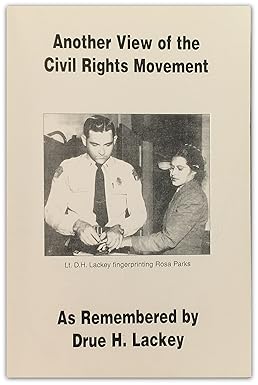Another View of the Civil Rights Movement by Drue Lackey
Another View of the Civil Rights Movement by Drue Lackey
Couldn't load pickup availability
This is a look at the civil rights movement from the point of view of a Montgomery AL police officer.
Lackey is perhaps best known for fingerprinting Rosa Parks months after she famously refused to change seats on a Montgomery bus in December 1955. He also booked prominent civil rights leader Rev. Martin Luther King Jr. in 1956.
I am writing this book because people need to know the police officers side of the Civil Rights Movement.
This movement was about more than "civil rights". It was designed to intimidate and demoralize the police in the county and cause chaos in our cities and states.
The civil rights movement actually began on December 1, 1955, in Montgomery, Alabama when Rosa Parks was arrested for refusing to give up her seat on a City Lines bus to a White person. this began the bus boycott on December 5, 1955, and lasted 381 days. The U.S. Supreme Court ruled the bus segregation laws of the state and cities were unconstitutional, thus ending the bus boycott.
The Civil Rights Movement spread throughout this county, causing riots, burning, looting, deaths, and chaos in many cities. The police took a lot of physical and verbal abuse from these protesters.
They did their job in a professional manner and saved this country from chaos and the Communist Party getting a foothold on this country.
This movement was partially funded by the Communist Party and they had many people in key positions in the movement who were calling the shots. the Police received this information through their intelligence units and the FBI.
The Police took a "bum rap" from some of the liberal media. If there was a large scale confrontation between the Police and people breaking the law, the media usually reported in one of two ways. Either the Police used "excessive force" or they let the situation get out of hand. Any force used to prevent the situation from getting out of hand was called "excessive force". If the Police arrived in large numbers to squelch disorder without the need for force, then sending in so many officers was called "overreacting". if an incident involved a White police officer and a Black criminal, the media called it "police brutality" or "racial profiling". and usually did not check the facts.
This book will reveal the many problems police officers faced in Montgomery and other parts of the county during the Civil Rights movement.
There were many people fooled by Martin Luther King, Jr., and his so-called "non-violent movement".

